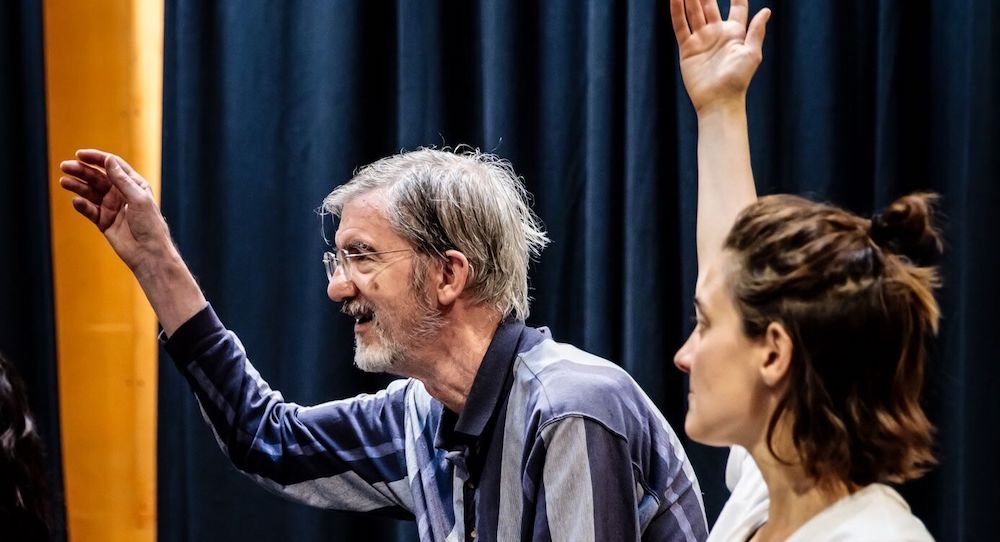Adult dance is one the fastest growing areas of dance class training. The benefits of dance for all populations is well documented. Programs that are tailored to the needs of the older adult can have enormous health and social benefits. For older people, though, dance is not traditionally seen as an obvious choice. We are well used to seeing youthful bodies expressing and creating through dance; we are less accustomed to seeing older bodies dancing. This lack of visibility may make dance a less obvious choice for the older adult.

Judy Leach and Rosemary Simons. Photo by Stirling Rank.
The benefits of dance class for older adults are manifold: dance can reduce the risk of dementia; improve balance, core strength and coordination leading to a reduction in falls; it increases social connectedness, mental health and well-being, while improving physical condition and mental acuity. Dance programs motivate people to stay engaged in movement activity, and many dance programs experience greater course completion rates than exercise alone programs. This data comes out of research conducted by Dr Katrina Rank, the director of Education of Life Long Learning at Ausdance VIC, aimed at collecting information in relation to the availability, variety and ongoing nature of dance programs for older dancers.
“Dance is often seen as a youthful activity, and, for many, dance participation is restricted to the capacity to keep up with younger members of class. A dancer may therefore start to identify as older as early as in their mid-30s,” Rank notes in her report.
Since that report, Ausdance VIC has been working on developing training for teachers. “We are creating a nationally recognised training, for individuals with significant dance experience, so that they can teach safely and operate with great knowledge with seniors and with aged,” says Rank.

Dance for Parkinson’s. Photo by Robert Wagner.
Ausdance NSW is also paying attention to practice in this area. Claire Gammon, the projects manager, is leading projects to promote safe practice and build networks for this practice in Australia.
“In 2031, more than one in three will be aged over 50,” Gammon says. “This population is growing in density.”
Gammon has been creating a network of teachers, producers, academics, programs managers all working in NSW in the area of “creative aging”. She explains, “We invited all people from arts companies, to listen to work taking part in the sector. People who are trained to work with elders. We asked, ‘How do we quantify for funding the benefits of social health and mental health?’ We asked artists what the social parameters are around the who the dancer is, and at what age are they no longer considered a professional dancer, and why so many professional dancers begin to lean out of their own sector in their 30s.”
Are you creating work with or by older adults, or providing classes for adults? Ausdance NSW is looking for people working in the sector interested in creative aging in dance. “We want to consult with the community to find out where the art is going on, to be able to support their work to build a network of like-minded professionals,” says Gammon.

103-year-old Eileen Kramer, from ‘On View Icons’ by Sue Healey.
“It’s serious business,” Rank states. “People’s health and safety are in the hands of their teachers. It is important to ensure that Australia’s dance artists have the skills needed to work with our aging populations.”
To get in contact with Ausdance NSW about work in creative aging in dance, visit www.ausdancensw.com.au. You can get in touch with Ausdance VIC about its new education programs through www.ausdancevic.org.au.
Check out Dr Katrina Rank’s research here. As well as her work at Ausdance, Rank runs Fine Lines, a contemporary dance group for adults at Dancehouse in Victoria. For more, click here.
By Tamara Searle of Dance Informa.

















